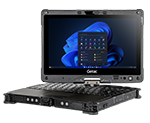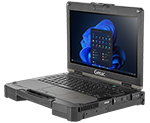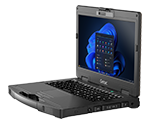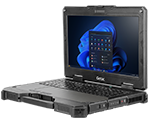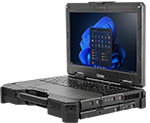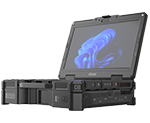Enterprise Asset Management (EAM) | Definition & Capabilities
Enterprise asset management (EAM) is a comprehensive approach used to oversee and manage an organization's physical assets throughout its lifecycle. The main aim is to maximize asset utilization, extend the asset lifecycle, and reduce operational costs.
In the context of EAM asset management, it's important to understand that this approach encompasses more than just maintaining assets. It's about strategically managing them throughout their lifecycle, from acquisition to retirement, ensuring optimal performance and value generation.
What is Enterprise Asset Management (EAM)?
Enterprise asset management (EAM) is a comprehensive approach used to oversee and manage an organization's physical assets throughout its lifecycle. The main aim is to maximize asset utilization, extend the asset lifecycle, and reduce operational costs.
When asking, 'What is an EAM system?', it's key to note that it's not just a tool, but a strategic approach that integrates technology, processes, and people to manage the entire lifecycle of an organization’s assets.
EAM encompasses aspects such as maintenance scheduling, predictive maintenance, warranty management, inventory management, enterprise asset management software with various enterprise asset management capabilities, materials management, and supply chain management.
EAM and Computerized Maintenance Management Systems (CMMS)
Within the industrial manufacturing sector, a primary focus for Getac Solutions, the emphasis on EAM largely revolves around the utilization of Computerized Maintenance Management Systems (CMMS).
The CMMS EAM definition extends to systems that not only maintain records and schedules of maintenance activities but also provide comprehensive data that feeds into the broader EAM strategy, supporting asset optimization and lifecycle management.
CMMS aids in maintenance management processes, ensuring equipment readiness through preventative and maintenance tasks and managing assets efficiently. These computerized maintenance management systems and tasks contribute to reducing downtime and increasing the lifespan of the asset, thus ensuring better asset utilization.
Rugged Computing Solutions for EAM and CMMS - Getac Select®
Getac devices are highly compatible with EAM and Computerized Maintenance Management Systems (CMMS) software, giving you greater visibility and control over your critical assets.
Importance of EAM in Modern Organizations
EAM systems are important in modern organizations, particularly asset-intensive industries. By implementing an EAM system, organizations gain an enhanced ability to control the operational costs of assets and manage aging physical assets. The centralization of asset information allows for improved management of business processes, leading to business value enhancement.
Benefits of Implementing an EAM System
Improved Operational Efficiency and Productivity

An EAM system aids in optimizing business processes, leading to improved operational efficiency. It also allows maintenance teams to consolidate operational applications, therefore increasing productivity.
Enhanced Asset Lifecycle Management Results

EAM software not only features advanced capabilities for asset lifecycle management but also includes a variety of enterprise asset management capabilities that enhance overall organizational efficiency and asset utilization. This not only ensures asset performance is maximized but also leads to cost savings by extending the lifespan of operational assets and maintenance costs.
Compliance and Regulatory Adherence

With EAM software, businesses can ensure regulatory compliance by keeping track of asset information, maintenance practices, and associated priorities. EAM solutions provide real-time asset data to meet regulatory demands and reduce risk.
Workers’ Safety

EAM also has maintenance tasks which include monitoring asset maintenance of safety-critical items such as fire extinguishers and other equipment that might harm people if not working properly. This aspect of asset management EAM contributes to safer working environments.
Enterprise Asset Management Software Features and Capabilities
Asset Tracking and Information Management
EAM software provides organizations with the ability to track and manage assets in real time, whether they're fixed, physical assets, linear assets or mobile assets. This includes managing information related to the assets, such as maintenance history, location, and status.
Balance Sheet Record of Assets
An EAM system helps improve the balance sheet record of assets. It does so by providing an accurate representation of an enterprise's assets, thus contributing to better financial and risk management and planning.
Analytics and Reporting Capabilities
With features like predictive analytics, EAM software provides valuable insights into assets and key performance indicators. This allows for proactive preventive maintenance, with key performance indicators helping to anticipate and prevent potential issues.
Integration and Interoperability
EAM systems can integrate with other business systems like ERP software, leading to a streamlined supply chain, inventory management, and standardized processes. This enhances decision-making capabilities, optimizes resources, and reduces costs.
Related solutions

Getac deployXpress®
Software | Android
This cloud-based solution streamlines the deployment, configuration, provisioning, and over-the-air updating of Getac Android devices.

Device Monitoring System
Software | Windows
GDMS tracks and monitors deployed devices, spotting potential device issues, before they impact on your field-based workforce.

Getac KeyWedge Barcode Reader Utility
Software | Windows
Scan barcode data into your application with the devices in-built rear camera. No hardware. No upgrades. No SDK integration required.
Implementing EAM via Getac Solutions
Getac Solutions can help organizations implement a robust EAM program by ensuring seamless integration with existing systems and processes and providing ongoing support for continuous improvement and optimization of business processes. With Getac's devices and services, organizations can further optimize their operations and increase productivity.
READY FOR EAM, AR AND CMMS
Many enterprise asset management and computerised maintenance management systems’ functions, including augmented reality applications, require a powerful device.

F110
Tablets | Fully Rugged | 11.6-Inch | Windows
The F110 was named the Best Rugged Tablet in 2021 by ZDNet and in 2023 by TechRadar. It has a slim form factor and an 11.6-inch FHD screen.
Future Trends and Innovations in EAM
Integration with IoT and Smart Assets

Integrating emerging technologies such as the Internet of Things (IoT) and smart assets is becoming increasingly important in EAM. This allows for real-time data collection and advanced analytics, leading to more efficient asset maintenance, enterprise asset management solutions, and asset utilization.
Predictive Maintenance

The use of predictive maintenance techniques allows businesses to foresee potential issues before they happen. This reduces the risk of unexpected failures and allows preventive maintenance and teams to address potential problems proactively.
Advanced Analytics and Decision Support

Advanced analytics plays a vital role in any enterprise asset management software solution. They provide insights into both asset lifecycle management and performance, facilitating better decision-making. This is particularly useful in predicting asset failure, managing spare parts inventory, and optimizing maintenance scheduling.
Sustainability and Resilience in EAM

Incorporating environmental, social, and governance (ESG) factors in asset management decisions for critical assets and asset data is becoming increasingly important. Modern EAM solutions focus on sustainability, ensuring assets are managed in a way that minimizes environmental impact, supports social responsibility, and adheres to governance requirements to manage assets.
Conclusion
Enterprise asset management plays a pivotal role in achieving efficient asset management and operational excellence. It supports data-driven decision-making and risk management, streamlined processes, and enhanced collaboration. Not all CMMS tools offer the advanced capabilities that an EAM system does, making EAM solutions a more comprehensive choice for managing enterprise assets.
The future of EAM is promising, with trends such as IoT integration, predictive maintenance, advanced analytics, and a focus on sustainability driving its evolution.
In complex environments, businesses should consider implementing Getac's devices' enterprise asset management solutions and services, which are designed to support their critical assets and systems and help organizations optimize their operations. This is particularly beneficial for industries that are asset-intensive, such as manufacturing and life sciences.
The ultimate goal is to ensure that enterprise assets are used optimally and efficiently, contributing to the overall success of the organization.
Additional resources

The Role of Rugged Mobile Devices in Industry 4.0
Rugged Mobile Devices in Industry 4.0 | Getac

Industry 4.0 and the Case for Digital Maturity


